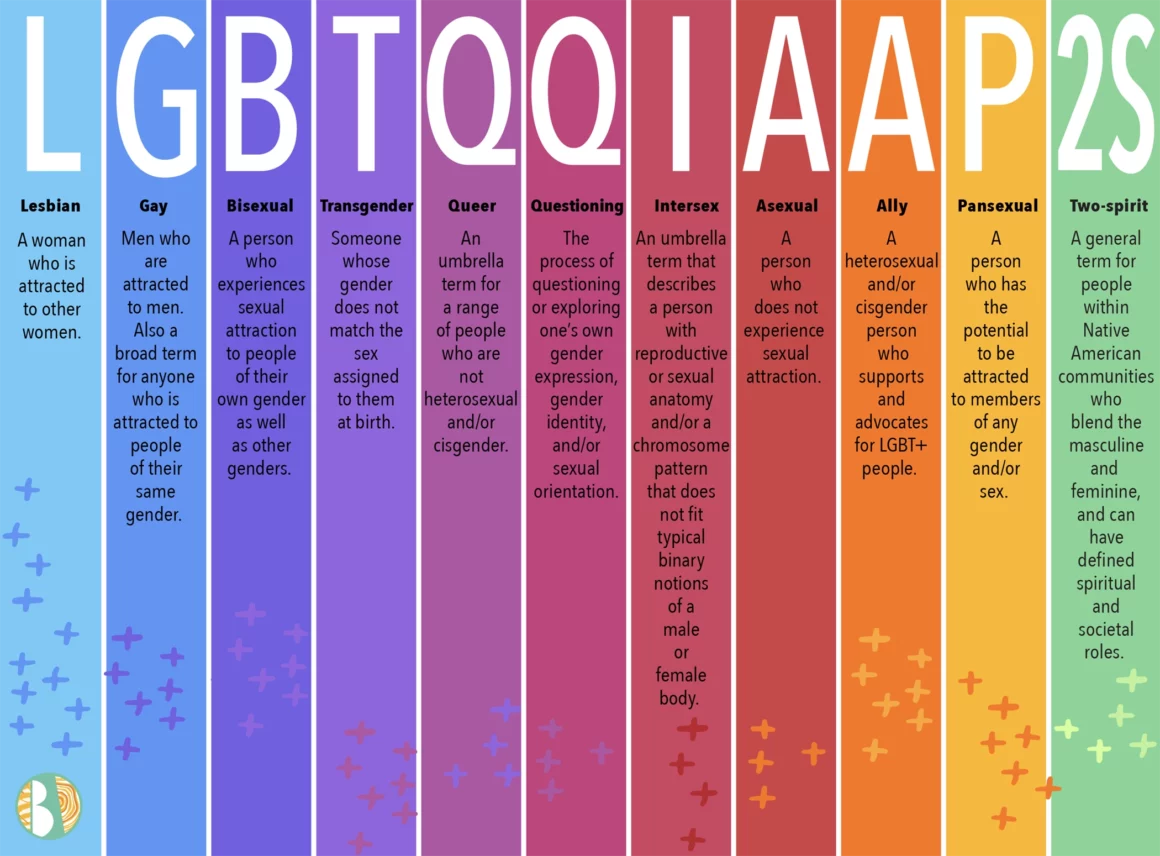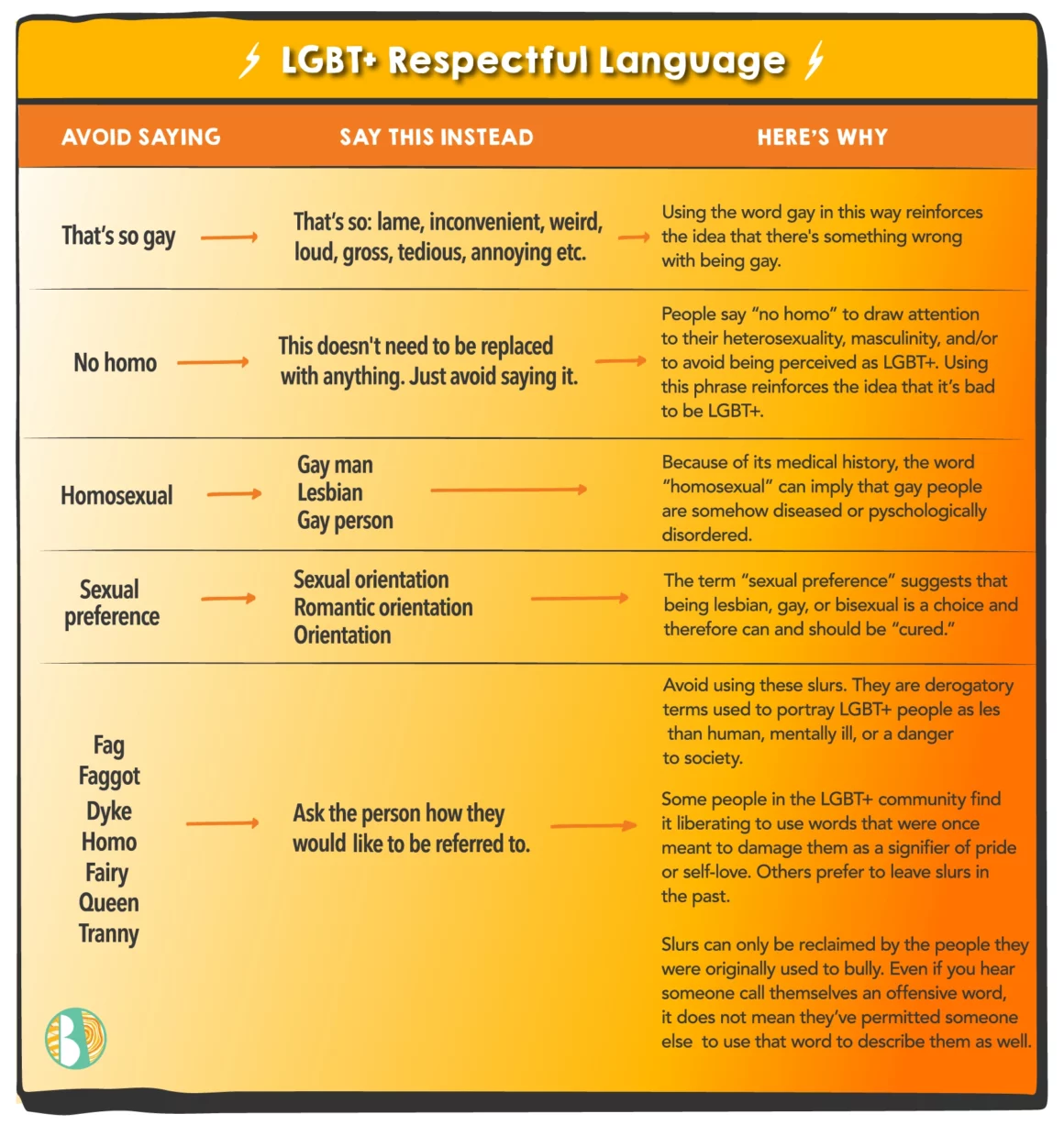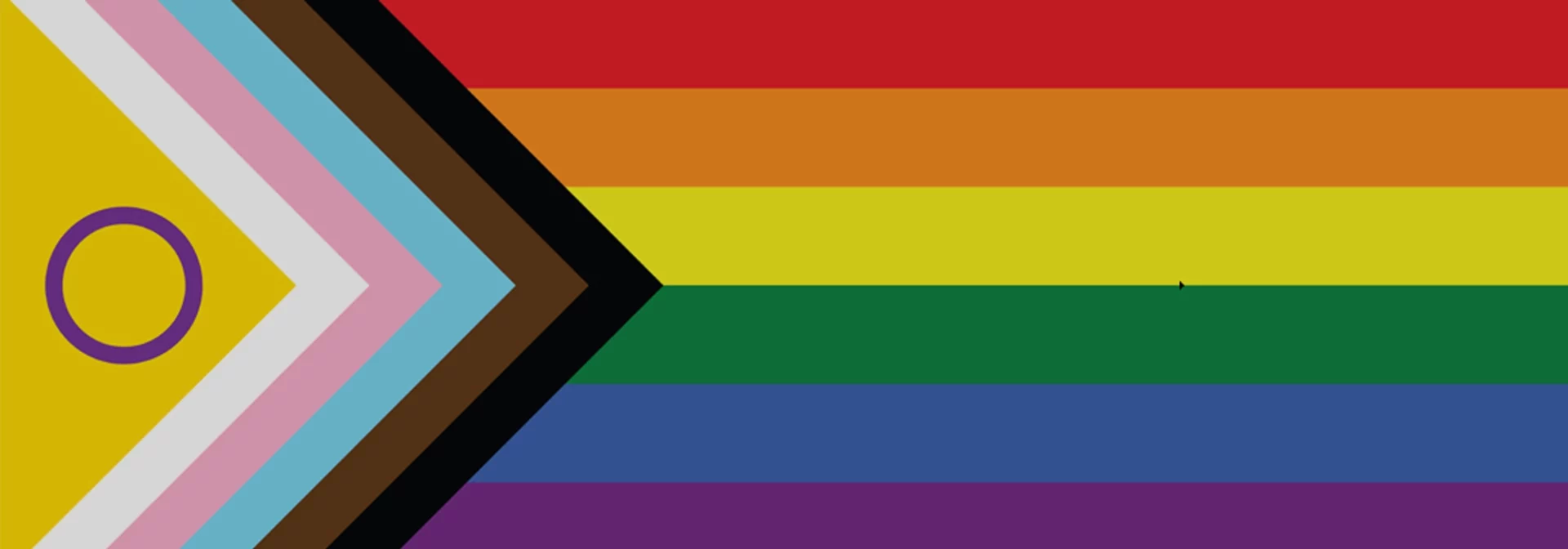The full abbreviation and other inclusive terms explained.
Author Jen Bell | Reviewed by Mason Dunn
Helping a young adult cultivate acceptance and love is important. Whether that means modeling self-love and respect or guiding an adolescent on their own journey with themselves and ostensibly, with their peers and community as well.
Which means, adding in a broad range of topics and conversations to daily life with your teen. Staying away from LGBTQIA+ subjects can be isolating — not to mention negative to an individual who may be coming into an identity of their own — which can have a discouraging effect on any young adult and the community at large.
The first step on the path of openness and acceptance? Talking to the teen in your life about LGBT+ topics and that begins with defining the acronym and what it means.
What Does LGBTQIA+ Mean?
LGBT+ stands for lesbian, gay, bisexual, transgender, plus. The “plus” is a way to include identities such as queer, questioning, asexual, intersex, two-spirit, neuroqueer, and many others not explicitly named in “LGBT.”
You might see other arrangements of these letters such as:
- LGBTQ = lesbian, gay, bisexual, transgender, queer
- LGBTQIA = lesbian, gay, bisexual, transgender, queer, intersex, asexual
- LGBTQQ2S = lesbian, gay, bisexual, transgender, queer, questioning, two-spirit

- Lesbian – A woman who is attracted to other women
- Gay – Men who attracted to men; also a broad term for anyone who is attracted to people of their same gender
- Bisexual – A person who experiences sexual attraction to people of their own gender as well as other genders
- Transgender – Someone whose gender does not match the sex assigned to them at birth
- Queer – An umbrella term for a range of people who are not heterosexual and/or cisgender
- Questioning – The process of exploring or questioning one’s own gender expression, gender identity, and/or sexual orientation
- Intersex – An umbrella term that describes a person with reproductive or sexual anatomy and/or chromosome pattern that does not fit typical binary notions of a male or female body
- Asexual – A person who does not experience sexual attraction
- Ally – A heterosexual and/or cisgender person who supports and advocates for LGBT+ people
- Pansexual – A person who has the potential to be attracted to members of any gender and/or sex
- Two Spirit – A general term for people within Native American communities who blend the masculine and feminine, and can have defined spiritual and societal roles
For a guide to commonly used LGBTQ+ terms and their definitions, click here to visit our glossary.
Do People Choose to Be Gay?
No, a person cannot choose to be gay or straight. According to the American Academy of Pediatrics and the American Psychological Association, sexual and romantic orientation is part of a person’s nature, something we humans are born with. Just like our eye color, it’s not something we choose, or can choose to change. While we don’t yet understand exactly the science behind a person’s orientation, it’s likely explained by a variety of biological and genetic factors.
There is no evidence that being gay is caused by early childhood experiences, parenting styles, trauma, illness, or the way someone is raised. All of the major medical organizations now agree that homosexuality is not an illness or disorder, but a form of sexual expression.
According to the Gallup Report, an estimated 5.6% of Americans identify as lesbian, gay, bisexual, transgender, or queer.
Various techniques have been used to try to change gay people and make them identify as heterosexual or straight. All of these techniques are ineffective, and can be extremely harmful. Mental health professionals advise against any efforts to change a person’s sexual orientation.
Tips for LGBTQIA+ Inclusive Language
How can you start using more inclusive language? Begin by educating yourself — it is the first step to becoming an ally to the LGBTQIA+ community. Making some simple changes to the words you use can have a big impact!

Rather than saying, that’s so gay, say, that’s so lame, inconvenient, weird, loud, gross, tedious, annoying, etc.
- Using the word “gay” in this way reinforces the idea that there’s something wrong with being gay.
Instead of remarking, no homo, don’t replace it with anything. Just avoid saying it.
- People say “no homo” to draw attention to their heterosexuality, masculinity, and/or to avoid being perceived as LGBT+. Using this phrase reinforces the idea that it’s bad to be LGBT+.
Avoid using homosexual to describe someone’s sexual orientation, and use descriptors like gay man, lesbian, or gay person.
- Because of its medical history, the word “homosexual” can imply that gay people are somehow diseased or psychologically disordered.
The term sexual preference is outdated; use sexual orientation, romantic orientation, or orientation instead.
- The term “sexual preference” suggests that being lesbian, gay, or bisexual is a choice and therefore can be “cured.”
Stay away from slurs (i.e. homo, dyke, queen, etc.), and ask a person how they would like to be identified.
- Avoid using these slurs. They are derogatory terms used to portray LGTB+ people as less than human, mentally ill, or a danger to society.
- Some people in the LGBT+ community find it liberating to use words that were once meant to damage them as a signifier of pride or self-love. Others prefer to leave slurs in the past.
- Slurs can only be reclaimed by people they were originally used to bully. Even if you hear someone call themselves an offensive word, it does not mean they’ve permitted someone else to use that word to describe them as well.
Use transgender instead of transgendered.
- Transgender is an adjective not a noun. The word never needs an “-ed” at the end. Rather than saying “Alex is a transgender,” say “Alex is a transgender person” or “Alex is a transgender man.”
It is crucial for parents and caregivers to actively engage in conversations about LGBT+ topics with their teens and model inclusive language. By doing so, they can help their teens cultivate acceptance and love for themselves and others, which is essential for building healthy relationships and creating an inclusive community.
Now, you have the tools to understand the meaning behind the LGBT+ acronym, and the language skills to speak inclusively with acceptance and respect.
